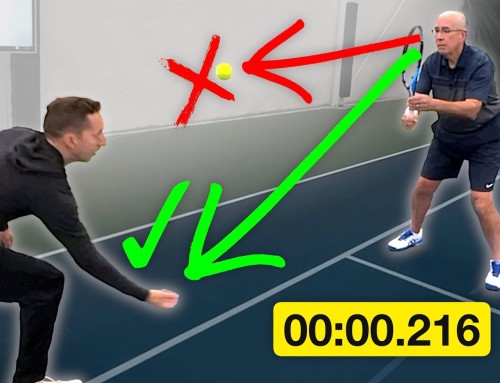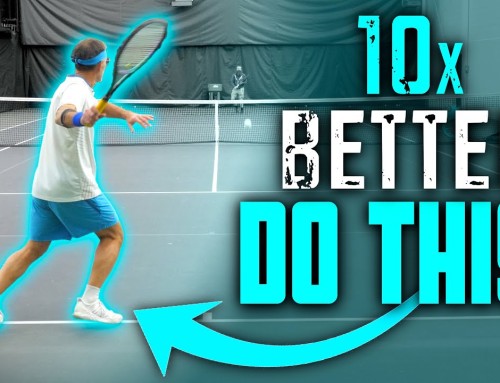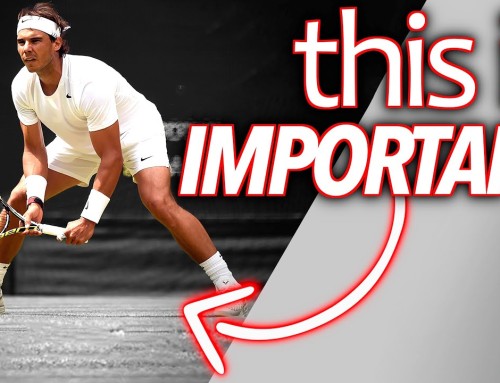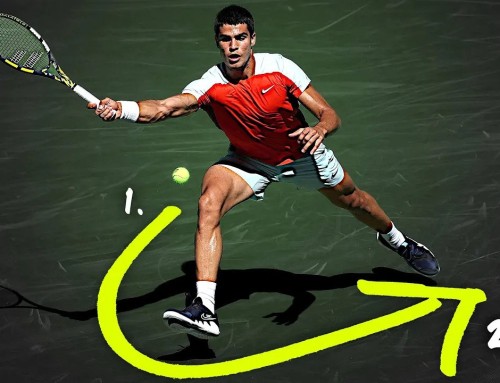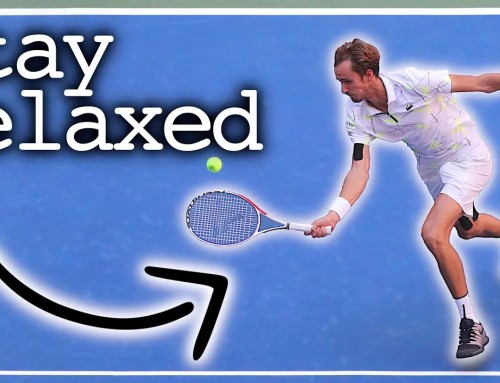 Moving backwards is not something that us humans do very naturally. This makes sense of course since our bodies are designed to move forward. What does this mean for our tennis games? Moving back to cover a good lob is very often a huge weakness for tennis players, especially doubles players who spend a ton of their time up at the net. In my experience very few recreational level players move correctly when trying to get back towards the baseline for an overhead and this causes lots of problems when even a relatively easy lob gets hit up into the air. Don’t be this person! The lob is the highest, slowest, most defensive shot in tennis, not something that you should be fearful of or afraid to hit. Hopefully this quick article will give you a good idea of how to best move in a backwards direction to cover even the best lob and give you more confidence when you’re up at the net.
Moving backwards is not something that us humans do very naturally. This makes sense of course since our bodies are designed to move forward. What does this mean for our tennis games? Moving back to cover a good lob is very often a huge weakness for tennis players, especially doubles players who spend a ton of their time up at the net. In my experience very few recreational level players move correctly when trying to get back towards the baseline for an overhead and this causes lots of problems when even a relatively easy lob gets hit up into the air. Don’t be this person! The lob is the highest, slowest, most defensive shot in tennis, not something that you should be fearful of or afraid to hit. Hopefully this quick article will give you a good idea of how to best move in a backwards direction to cover even the best lob and give you more confidence when you’re up at the net.
Three Step Drop
I want you guys to check out this youtube video of Jay Cutler demonstrating a “three step drop”. The three step drop is a series of steps used by high level football quarterbacks to get themselves off the line of scrimmage quickly and efficiently. The quarterback makes this move to give himself some space to work with and also to buy some time between himself and the oncoming defenders trying to make his life miserable. This guy is a professional athlete, he definitely knows how to move, even backwards away from his own end zone. Obviously his tips on where to hold the ball aren’t applicable to us, but I want you to pay very close attention to what he says about his feet and how he moves them.
Jay begins in essentially a “ready position”. Tennis players should be in a little bit wider of a stance than he demonstrated but everything else is identical: knees bent, facing forwards, and hands in front. From this position he turns himself to the side by bringing his right foot back around his left to put himself into a “square” or “neutral” stance. This is absolutely critical and where things break down for players who are poor at moving back for overheads. Not only does turning to the side give you a much wider base to move back from with your feet but it puts your body in a strong position to hit an overhead from as well. Imagine trying to hit an effective serve in a stance that starts you off facing the net head on, it just doesn’t make sense from a technique perspective.
From this sideways position Jay uses two different types of steps: a cross over step and a shuffle step. In my opinion as long as you get sideways to the net and lead with your right foot either type of step is perfectly fine to get yourself back underneath a deep lob. The cross over step will definitely get you back more quickly than only using a side shuffle, but it definitely takes some more coordination and athleticism to use. Try them both out, as well as combinations of each to see what feels most natural to move you back towards the baseline. When I get an easy lob I only use side shuffles to make adjustments while turned to the side, on a tougher lob that I’m really having to work for I’ll use one or two cross over steps at the most and then shuffle steps from there, just like Cutler did in his demonstration.
Check out the image at the top of this article of Favre and Rodgers as well (can you tell who my favorite football team is?). The images of both players show them in the middle of a cross over step. While their shoulders are perpendicular to the line of scrimmage their hips are actually facing back towards the opposing end zone. This is why they’re able to get back off the line so quickly, it’s almost like running backwards, but with their upper body sideways ready to throw. As I said earlier this takes a lot more athleticism and coordination, but definitely give it a shot. Moving back this way for an overhead is the ultimate in speed and balance.
Get out there on the court and practice this! With some time and repetition you’ll be moving back more quickly and in better balance in no time.



